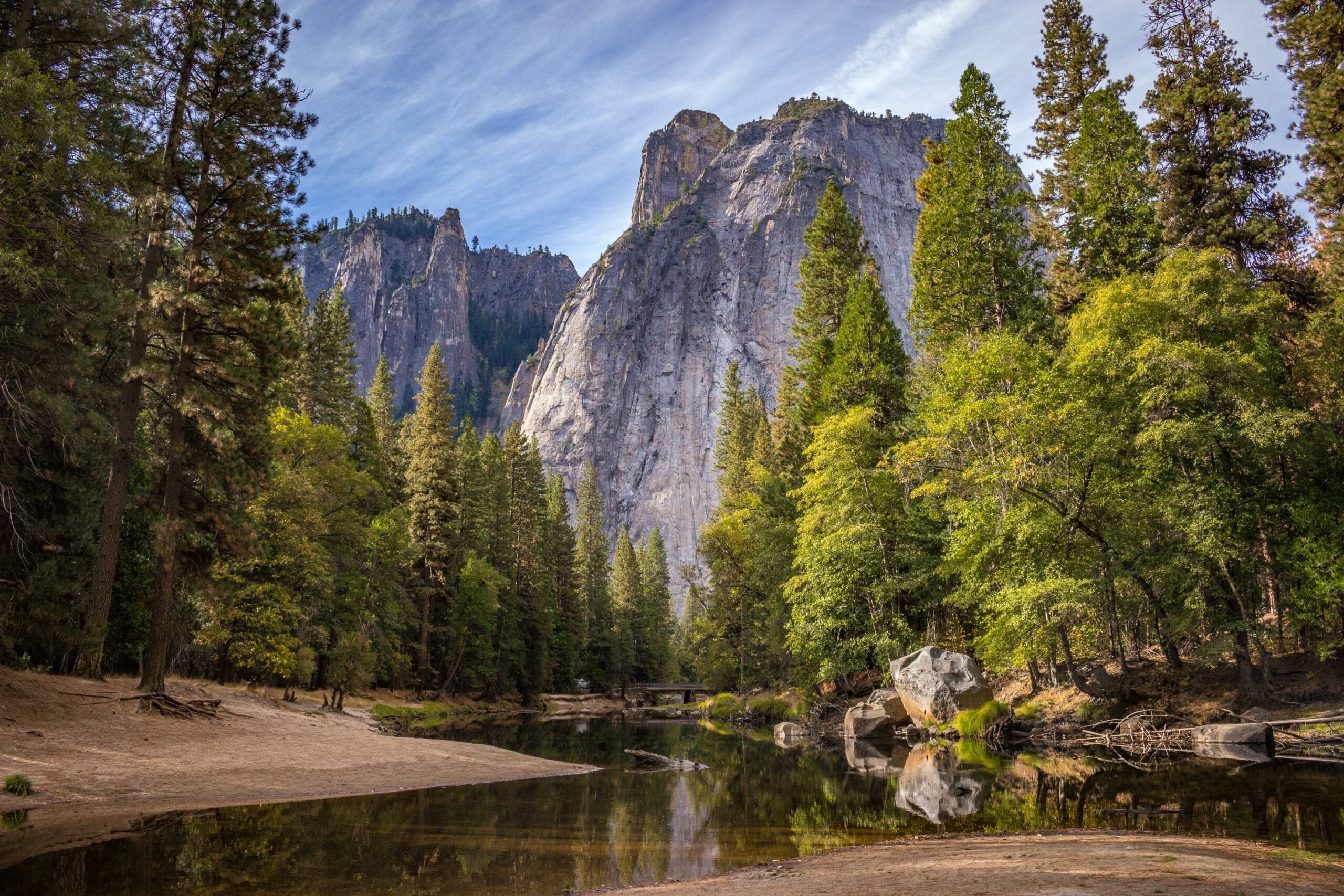Are you ready to explore the captivating world of landscape architecture? In this article, we will delve into a realm where design meets sustainability, unveiling intriguing facts that will leave you in awe. Join me as we unravel the secrets behind the creation of harmonious outdoor spaces, where every element serves a purpose, and where the principles of nature intertwine with human creativity. Get ready to discover the fascinating world of landscape architecture, as a sustainable design expert uncovers hidden insights that will inspire and educate.

Landscape Architecture Facts
As a landscape architect, I want to share some fascinating facts about landscape architecture that highlight its importance, creativity, and impact on the built and natural environment.
1. Landscape Architecture Enhances Nature and Creates Natural Settings for Buildings, Towns, and Cities
Landscape architecture goes beyond just beautifying outdoor spaces. It involves designing and creating landscapes that seamlessly integrate with the surrounding environment, enhancing its natural features. By carefully considering elements such as climate, topography, and vegetation, landscape architects create outdoor spaces that not only look visually appealing but also function harmoniously with nature. This approach allows buildings, towns, and cities to coexist with their natural surroundings, promoting sustainability and ecological balance.
Key point: Landscape architecture enhances nature by seamlessly integrating outdoor spaces with the surrounding environment, promoting sustainability and ecological balance.
2. Landscape Architecture Is a Multi-Disciplinary Field that Works to Create Picturesque Landscapes in Both Urban and Rural Environments
Landscape architecture is a dynamic and multi-disciplinary field that draws knowledge from various disciplines, including architecture, ecology, engineering, and horticulture. This collaboration leads to the creation of unique and picturesque landscapes, whether it’s in urban settings, rural areas, or even large-scale master plans. Landscape architects work with a vast range of stakeholders, including communities, developers, and policymakers, to transform spaces into functional and visually appealing areas that address social, cultural, and environmental needs.
Key point: Landscape architecture is a multi-disciplinary field that collaborates with various disciplines to create functional and visually appealing landscapes in different environments.
3. The Term “Landscape Architecture” Originated from a Book About Italian Painters
The term “landscape architecture” might not sound directly related to the field’s current practices, but it has an intriguing origin. It was first used by the Scottish landscape gardener Gilbert Laing Meason in the early 19th century. Meason borrowed the term from an Italian book titled “Saggio Sopra L’Architettura” (Essay on Architecture), where it referred to the painting of landscapes. Eventually, the term started being used to describe the practice of designing outdoor spaces, combining elements of art, architecture, and nature.
Key point: The term “landscape architecture” originated from an Italian book and initially referred to the painting of landscapes.
4. Australia Is Considered the Landscape Architecture Capital of the World
When it comes to landscape architecture, Australia is globally renowned for its innovation and excellence in design. The country has embraced landscape architecture as an essential profession, and its unique landscapes provide a rich canvas for creative and sustainable design solutions. With iconic projects like the Sydney Opera House Forecourt and the Royal Botanic Gardens in Melbourne, Australia has elevated landscape architecture to new heights, making it the destination for cutting-edge design and inspiration.
Key point: Australia is globally recognized as the landscape architecture capital of the world, showcasing innovative and sustainable design solutions.
5. The United States and the UK Are Considered the Best Places to Study Landscape Architecture
For aspiring landscape architects, pursuing their education in the United States or the United Kingdom can offer unparalleled opportunities. Both countries are home to prestigious universities that offer comprehensive landscape architecture programs, providing students with valuable knowledge and practical experience. These programs often emphasize sustainable design principles, ecological restoration, and community engagement. Studying in these renowned institutions equips future landscape architects with the necessary skills and expertise to create impactful and transformative designs that shape the future of outdoor spaces.
Key point: The United States and the United Kingdom are considered the top destinations for studying landscape architecture, offering comprehensive programs focused on sustainable design principles.
6. Landscape Architects are Capable of Creating Various Structures and Designs
Landscape architects are not limited to designing gardens and parks. Their expertise extends to creating a wide range of structures and designs that enhance the built environment. From urban plazas and public spaces to streetscapes and waterfront developments, landscape architects can transform any space into a functional and aesthetically pleasing environment. They skillfully blend artistry with technical knowledge, considering factors such as accessibility, drainage, and sustainability to create inviting and user-friendly landscapes.
Key point: Landscape architects are versatile professionals who can design various structures and environments, combining artistry with technical expertise.
7. Landscape Architecture Involves the Systematic Investigation of Existing Social, Ecological, and Soil Conditions in the Landscape
Before embarking on any landscape architecture project, thorough investigation and analysis of the existing conditions in the landscape are crucial. Landscape architects delve into the social, ecological, and soil aspects to gain a comprehensive understanding of the site. This knowledge informs their design decisions, allowing them to create landscapes that are responsive to the needs of the community, protect the environment, and promote sustainable practices. site analysis is essential to identify opportunities and constraints that influence the design process, ensuring the creation of functional and responsible outdoor spaces.
Key point: Landscape architecture involves systematic investigation and analysis of social, ecological, and soil conditions to inform design decisions and create responsible outdoor spaces.
8. Landscape Architects Analyze and Design Interventions to Produce Desired Outcomes
As experts in their field, landscape architects skillfully analyze the information gathered through site analysis and translate it into design interventions. They consider the aspirations of clients, environmental constraints, and the local context to develop innovative and sustainable solutions. Through their expertise in plant selection, grading, drainage, and construction techniques, they bring outdoor spaces to life. Whether it’s revitalizing an urban park or creating a masterplan for a new development, landscape architects guide the entire process, from concept development to construction oversight.
Key point: Landscape architects analyze site information and design interventions to produce innovative and sustainable solutions that transform outdoor spaces.
9. Landscape Architecture is a Profession that Encompasses the Design, Specification, and Management of the Built Environment as well as the Analysis, Preservation, and Enhancement of the Natural Environment
Landscape architecture is a multifaceted profession that combines creativity, technical expertise, and deep environmental consciousness. Landscape architects are not only responsible for designing and specifying outdoor spaces but also play a vital role in managing their implementation and ongoing maintenance. They strive to strike a balance between the built and natural environment, considering the ecological systems and cultural heritage of a place. By analyzing, preserving, and enhancing the natural environment, landscape architects contribute to the overall well-being of communities and the sustainable development of our planet.
Key point: Landscape architecture is a profession that encompasses the design, specification, and management of the built environment, as well as the analysis, preservation, and enhancement of the natural environment.
In conclusion, landscape architecture is a captivating discipline that combines artistic vision, technical expertise, and environmental stewardship. These fascinating landscape architecture facts highlight the profession’s commitment to creating sustainable, functional, and aesthetically pleasing outdoor spaces that enrich our lives and protect our planet.
Note: This article presents [landscape architecture facts] and provides insights into the profession’s diverse and impactful nature.
Landscape architecture is an awe-inspiring field that combines artistry, design, and nature. If you’re eager to unearth some fascinating facts about landscape architecture, look no further. Our website offers a comprehensive list of captivating insights at your fingertips. Explore the intriguing world of landscape architecture and expand your knowledge by clicking here: Facts About Landscape Architecture. From the evolution of courtyard gardens to the innovative techniques used in modern designs, you won’t be disappointed. So, what are you waiting for? Embark on a journey through mesmerizing landscapes and let your imagination run wild. Uncover the secrets of this enchanting profession and ignite your passion for the beauty of the natural world.
FAQ
Question: What is landscape architecture?
Answer: Landscape architecture is a multi-disciplinary field that works to create picturesque landscapes in both urban and rural environments. It involves the systematic investigation of existing social, ecological, and soil conditions in the landscape, analyzing and designing interventions to produce desired outcomes.
Question: What does a landscape architect do?
Answer: A landscape architect is responsible for enhancing nature and creating natural settings for buildings, towns, and cities. They analyze site conditions, consider client requirements, and use their expertise in plant species, topographic elements, and architectural principles to design harmonious and functional outdoor spaces.
Question: What does sustainable development have to do with landscape architecture?
Answer: Sustainable development is a key aspect of landscape architecture. Landscape architects strive to create landscapes that not only enhance the built environment but also preserve and enhance the natural landscape. They incorporate environmentally responsible practices, consider construction techniques, and promote the use of sustainable materials and design strategies.
Question: How do landscape architects communicate their designs?
Answer: Landscape architects use a combination of visual communication skills and landscape design software to effectively convey their designs to clients and stakeholders. They create detailed plans, renderings, and presentations that showcase their ideas, ensuring clarity in the execution of the project.
Question: What are some notable achievements in landscape architecture?
Answer: Australia is considered the landscape architecture capital of the world, known for its innovative and sustainable designs. However, landscape architecture is celebrated globally, with various countries, including the United States and the UK, being recognized as top destinations for studying and practicing this profession.
- Star Ring Trends: Etsy vs Amazon - March 28, 2025
- Boost Pollinator Habitats: Baby Blue Eyes Sustainable Farming Guide - March 28, 2025
- Protect Big Black Bears: Effective Conservation Strategies - March 28, 2025
















